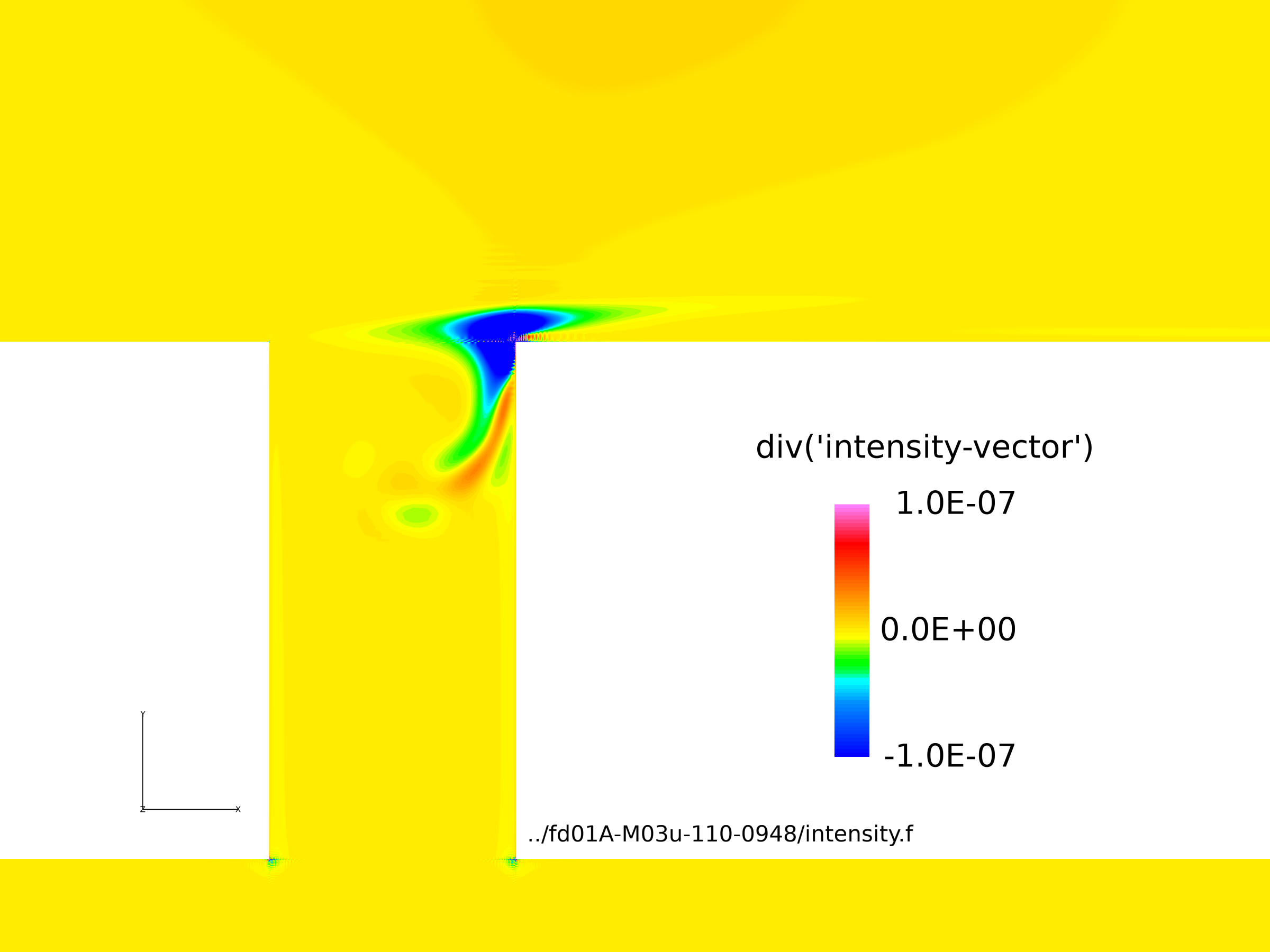Noise suppression technology for aircraft jet engines
JAXA Supercomputer System Annual Report April 2019-March 2020
Report Number: R19EA0716
Subject Category: Aeronautical Technology
- Responsible Representative: Tatsuya Ishii, Aeronautical Technology Directorate, Propulsion Research Unit
- Contact Information: Shunji ENOMOTO(enomoto.shunji@jaxa.jp)
- Members: Shunji Enomoto, Tatsuya Ishii
Abstract
Ultra high bypass ratio aviation jet engines have a smaller sound absorbing liner area than conventional engines. In this project, we will develop sound-absorbing device technology that provides high noise reduction performance even with a small-sized sound-absorbing liner.
Reference URL
Please refer to '404 Not Found | JAXA航空技術部門'.
Reasons and benefits of using JAXA Supercomputer System
To perform many LES calculations by changing the shape of the sound absorbing liner and the incident sound frequency, the calculation performance of SORA-PP and TPP and the storage capacity of SORA-FS and J-Space were required.
Achievements of the Year
The purpose of this study was to evaluate the sound absorbing performance of a sound absorbing liner with glazing flow by numerical analysis. The calculation model of the sound absorbing liner greatly simplified the actual flow duct device, and used only one hole in two-dimensional laminar flow. Fig. 1 shows the sound pressure and the velocity vector around the hole of the sound absorbing liner. In the upper part of the figure, the flow of M = 0.3 flows from left to right, and only the boundary layer portion is shown in the figure. The incident sound also proceeds from left to right in the figure. A vortex is generated in the hole of the sound absorbing liner by the glazing flow, and the shape of the vortex is changed by the incident sound. Fig. 2 shows the fluctuation component of the velocity due to the incident sound. It can be seen that the velocity fluctuation is large near the corner on the downstream side of the hole, and almost no sound passes through the other part of the entrance of the hole. Fig. 3 is divergence of time-averaged sound intensity calculated from numerical calculation data. A negative sound intensity divergence (blue in the figure) may indicate a location where sound is diminishing. Accordingly, it has been clarified that the sound absorbing liner in the case where the glazing flow exists has a different sound absorption mechanism from the sound absorbing liner having no glazing flow.
Fig.1(video): The sound pressure and the velocity vector around the hole of the sound absorbing liner
Fig.2(video): The fluctuation component of the velocity due to the incident sound
Publications
- Non peer-reviewed papers
1) Shunji ENOMOTO, Tatsuya ISHII, Toshio NISHIZAWA, Hidemi TOH, Numerical Analysis of an Acoustic Liner Performance in Grazing Flow, 25th AIAA/CEAS Aeroacoustics Conference, AIAA-2019-2613
2) Shunji Enomoto, Tatsuya Ishii, Numerical Analysis of Multiple Hole Acoustic Liner Performance in Grazing Flow, JSASS-2019-2141-F+A
Usage of JSS2
Computational Information
- Process Parallelization Methods: MPI
- Thread Parallelization Methods: OpenMP
- Number of Processes: 12 - 96
- Elapsed Time per Case: 37 Hour(s)
Resources Used
Fraction of Usage in Total Resources*1(%): 0.31
Details
Please refer to System Configuration of JSS2 for the system configuration and major specifications of JSS2.
| System Name | Amount of Core Time(core x hours) | Fraction of Usage*2(%) |
|---|---|---|
| SORA-MA | 3,456.96 | 0.00 |
| SORA-PP | 118,145.36 | 0.77 |
| SORA-LM | 3.37 | 0.00 |
| SORA-TPP | 427,719.82 | 25.82 |
| File System Name | Storage Assigned(GiB) | Fraction of Usage*2(%) |
|---|---|---|
| /home | 30.22 | 0.03 |
| /data | 2,172.36 | 0.04 |
| /ltmp | 4,512.13 | 0.38 |
| Archiver Name | Storage Used(TiB) | Fraction of Usage*2(%) |
|---|---|---|
| J-SPACE | 12.23 | 0.31 |
*1: Fraction of Usage in Total Resources: Weighted average of three resource types (Computing, File System, and Archiver).
*2: Fraction of Usage:Percentage of usage relative to each resource used in one year.
JAXA Supercomputer System Annual Report April 2019-March 2020



